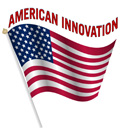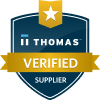Safety gear is indispensable in construction, manufacturing, healthcare, and emergency response, yet budgets can be tight. True cost efficiency comes from removing material, energy, and labor waste while leveraging PPE injection molding to meet every ANSI or CE performance benchmark.
Balancing Cost and Safety
Instead of cutting corners, manufacturers evaluate each cost driver, such as resin price, cycle time, secondary operations, and adjust the process so the finished product still passes impact and chemical-resistance tests.
Smart Material Selection
Many moderate-load housings perform just as well with impact-modified polypropylene as with premium engineering resins. A controlled percentage of reground sprues can be reintroduced after drop-test confirmation. Selecting pre-compounded colors eliminates downstream painting and pad printing, saving both labor and curing-oven energy.
Process Efficiency Through PPE Injection Molding
- Multi-cavity tools boost output on existing presses, while balanced gate and runner layouts trim shot weight and scrap
- Scientific molding paired with cavity-pressure monitoring ensures every part meets specification, removing costly rework
- PPE injection molding forms ribs, strap anchors, and vent channels in a single shot, sharply reducing subsequent assembly time
Working With Injection-Molding Plastic Manufacturers
Experienced partners already own servo-driven presses, quick-change mold bases, and robotics. They offer:
- Family molds that group several small PPE parts under one setup, spreading tooling cost across multiple SKUs
- In-house tool rooms that handle repairs or engineering changes without shipping delays
- Volume-purchase resin contracts that secure prices individual OEMs rarely match
Design Optimization Reduces Waste
Uniform wall thickness prevents sink marks and allows thinner sections. Strategically placed ribs replace solid blocks of plastic, cutting weight by up to twenty percent. Snap-fit connections molded into the part remove screws along with the labor to install them. Every gram shed from a forty-gram component saves forty kilograms of resin per thousand units produced.
Sustainability That Lowers Cost
Post-consumer recycled polypropylene and PET grades now meet impact requirements while costing ten to fifteen percent less than virgin equivalents. Using them can also unlock tax incentives tied to circular-economy content. Careful lot segregation and traceability keep recycled grades out of applications that must remain virgin-only.
Delivering Reliable Protection at Lower Cost
Combining informed material choices, high-efficiency PPE injection molding, and design for manufacturability enables manufacturers to deliver reliable safety gear at a lower total cost. To explore cost-saving options for your next program, contact Hansen Plastics Corporation for material trials, tooling concepts, and unit-price projections.



